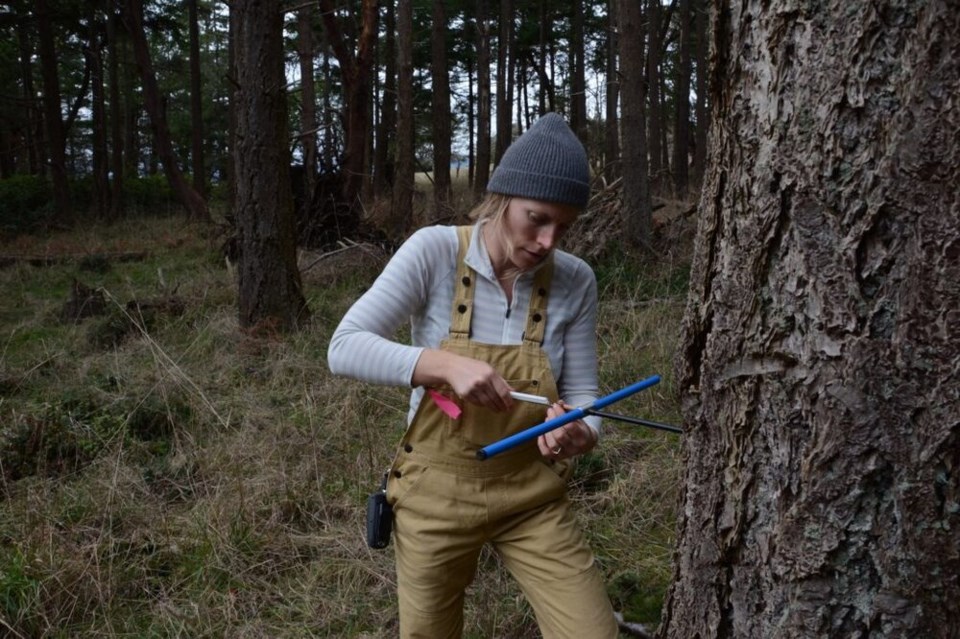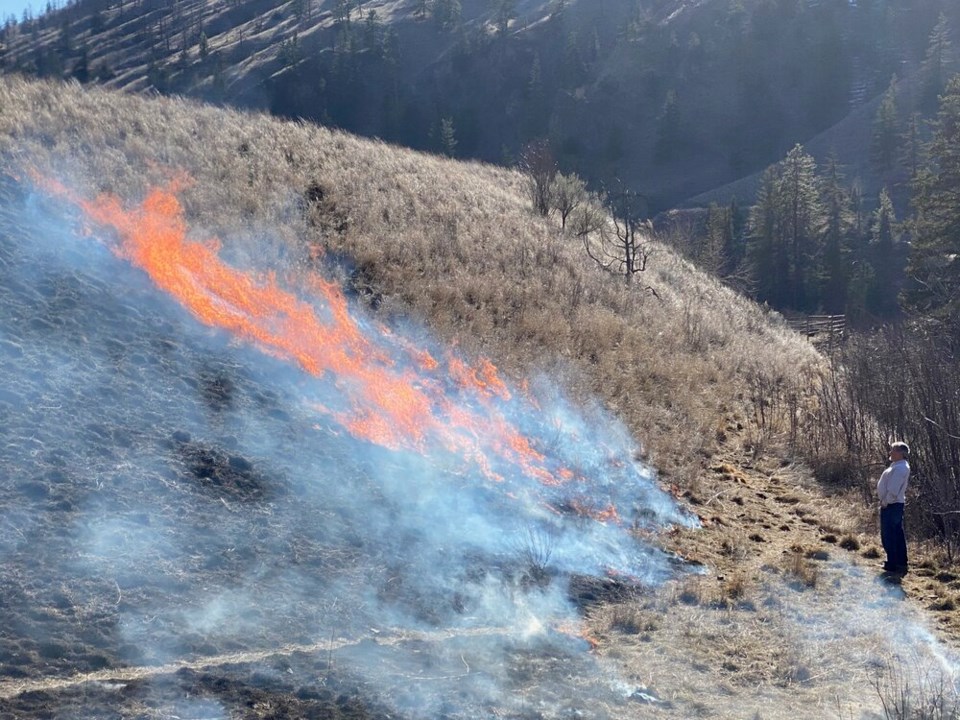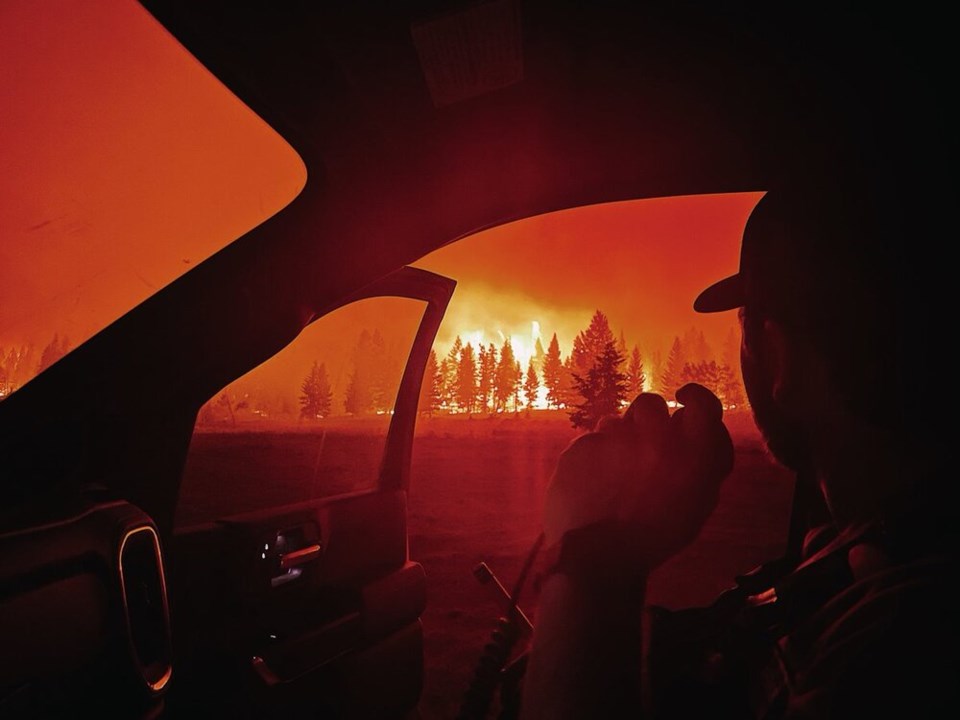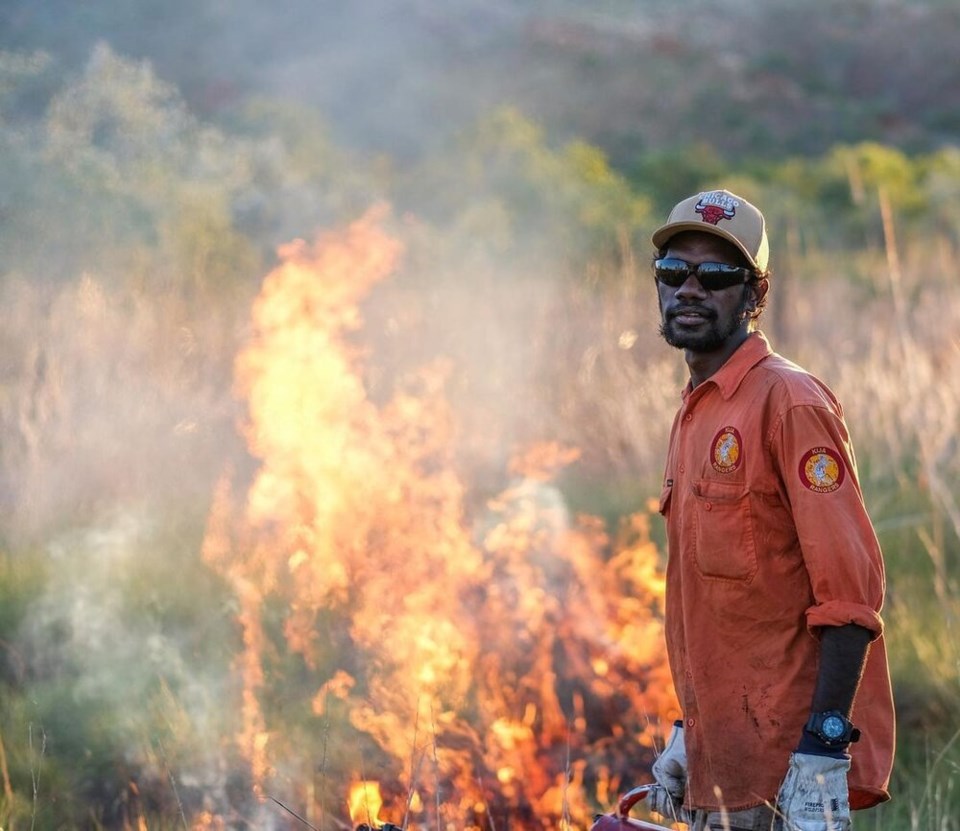A UBC researcher looking into traditional Indigenous burning practices has found setting fire to the land in the right way and at the right time can ramp up biodiversity.
In a review of data over the past 120 years, post-doctoral researcher and former wildland firefighter Kira Hoffman and her colleagues found 79 per cent of studies reported increases in biodiversity due to off-peak-season burning.
“Overwhelmingly, Indigenous fire stewardship and cultural burning practices almost always benefit or enhance biodiversity,” Hoffman tells Glacier Media. “…across all scales.”
Other researchers have found strong evidence that Indigenous communities across B.C. and beyond used fire to garden forests and rangelands.
In some cases, that meant opening up foraging space for moose or deer; in others, firekeepers burned to stimulate berry growth or clear waterways so salmon could more easily find their way upstream.
“When fire is used frequently and low severity, habitats respond well — they’re healthier, they can recycle nutrients, and they can support animals and humans,” says Hoffman.
Improving the biodiversity of a forest also serves to ward of emergencies.
Before Europeans settled in B.C., it’s thought over 500,000 hectares of land were burned every year. However, unlike today — B.C. crossed the last weekend — those fires were largely contained to shoulder seasons when snow was still melting or rain had fallen.
“If we had more cultural burning, we’d have a very different looking landscape,” says Hoffman. “a lot more open, lot less dead and dying trees on the ground — many forests would have trees of different ages.”
“It doesn’t stop fire from coming in, but it can slow them down.”

B.C. FALLING BEHIND
Across the world, wildfires burn between 3.5 and 4.5 million square kilometres every year. That’s like burning India and Pakistan together.
In Canada, over 522,000 people have been evacuated due to wildfire and smoke since 1980, half from Indigenous communities.
At the same time, Indigenous communities are some of the planet’s most important stewards: they comprise only five per cent of the world’s population but protect roughly 85 per cent of the world’s biodiversity, according to the study.

But when it comes to supporting Indigenous burning, Hoffman says Canada is behind several other jurisdictions worldwide.
Over the past decade, B.C. has burned roughly 5,000 hectares annually in controlled burns; in northern Australia, nearly 50 million hectares of land are managed through traditional burning every year.
A big part of the gap between the two countries, says Hoffman, comes down to public support for putting fire onto the landscape.
“There’s just generally a greater public support for controlled fire in Australia,” she says.
HOW AUSTRALIA GOT THE PUBLIC ON-BOARD
A hemisphere away, the fire season has just begun.
Australia’s savannah — which covers roughly 1.9 million square kilometres, or a quarter of the continent’s landmass — is just now coming into its driest period.
It’s when Indigenous firekeepers go out on a land base larger than the country of Sweden and, backed by aerial ignitions and smart mapping technology, burn the bush to create fire breaks and stimulate a rich tapestry of life.
Savannah fires produce an estimated 65 per cent of the continent's greenhouse gas emissions. But by strategically burning traditional, low-intensity fires over large tracks of land, northern Australia has the kind of devastating fires that dump greenhouse gases into the atmosphere and threaten to wipe out both human settlements and biodiversity.
“It’s an unbelievable success story,” says Jeremy Russell-Smith, head of the who has advocated for traditional burning for decades.
It wasn’t always that way.
Indigenous burning was not officially sanctioned in Australia at the turn of the millennium, a knock-on effect of racist government policies stretching back to colonization, says Russell-Smith.
That would soon change. The 1997 Kyoto Protocol set in motion a framework to trade carbon credits. A decade later, the Houston-based oil and gas giant Conoco-Phillips started to pour money into carbon offsets.
The agreement focused on 28,000 square kilometres of the Indigenous territory known as West Arnhem Land. By scaling up prescribed or traditional burning practices, the program aimed to abate 100,000 tonnes of CO2-equivalent emissions over the next 17 years.
Carbon credit schemes have been described as everything from a panacea to a “.” Whatever the verdict, Conoco-Phillips’ entry into northern Australia showed politicians in the nation’s capital, Canberra, that traditional burning was a sensible way forward, says Russell-Smith.
Seven years into the traditional burning project, it had methane and nitrous oxide emissions by 37.7 per cent, compared to the previous 10-year emissions baseline.
Other projects followed, and by 2020, there were 76 registered savanna burning projects covering more than a quarter of Australia’s surface area.
“We did one big trick, and that was to turn the fire management problem into an economic opportunity to reduce greenhouse emissions,” Russell-Smith tells Glacier Media.
THE LIMITS OF A SENSIBLE APPROACH
Where traditional burning is effective at scale in northern Australia, the potential to replicate that blueprint in the fire-dominated ecosystems of British Columbia faces major hurdles.
For one, the savanna naturally burns more often than any other landscape in the world. That means that despite the suppression of Indigenous fire, huge amounts of wood fuel never accumulated in the way they have in B.C. forests.
“It’s just a wall-to-wall carpet of small stems that provide a lattice for the fire to travel into the canopies. It’s a frightening spectacle,” says Russell-Smith, who has spent time in B.C. and witnessed the scale and power of the province’s wildfires.

Instead of money from big oil, B.C.’s big opportunity rests with forestry companies, he says, echoing a recently published white paper calling for a paradigm change in B.C. wildfire management.
“You have to look at your out-of-control forest industries that cut to waste and then burn the debris,” says Russell-Smith. “It’s such a waste. Why not turn it into briquettes, turn it into an economic windfall for communities?”
Changing the status quo won’t be a smooth ride, warns Russell-Smith: even in Australia, turning public opinion has had its limits.
The researcher says all the local fire agencies in the northern territories support traditional burning but move down south to the country’s more populous regions, and that backing withers in the face of ignorance.
“They’re just so scared of fire. They’ve got no idea of fire management. You find the same in the scientific community — all these prejudices against sound traditional practices. They haven’t the faintest idea of the magnitude of the problem we face,” he says.
“It can be done.”



